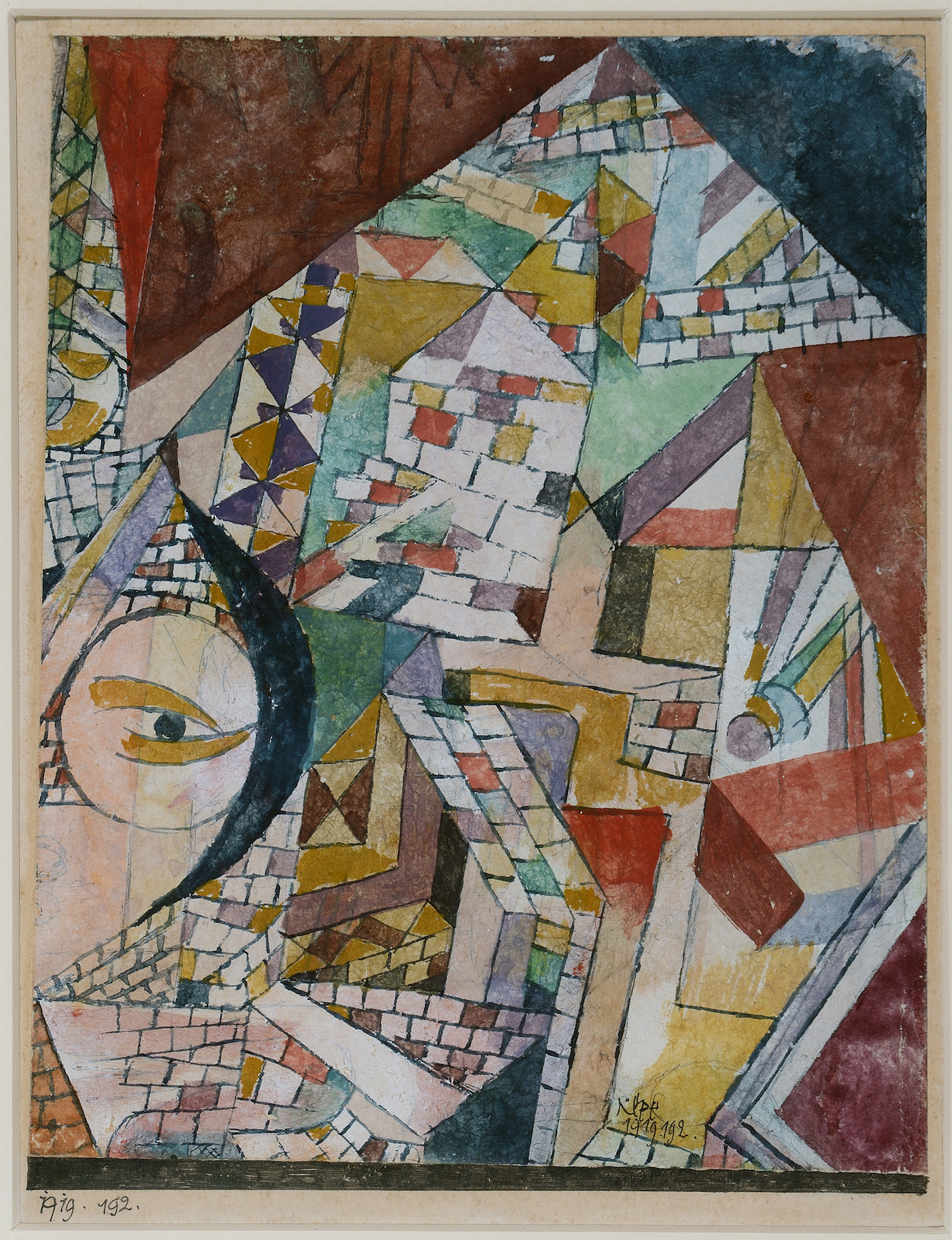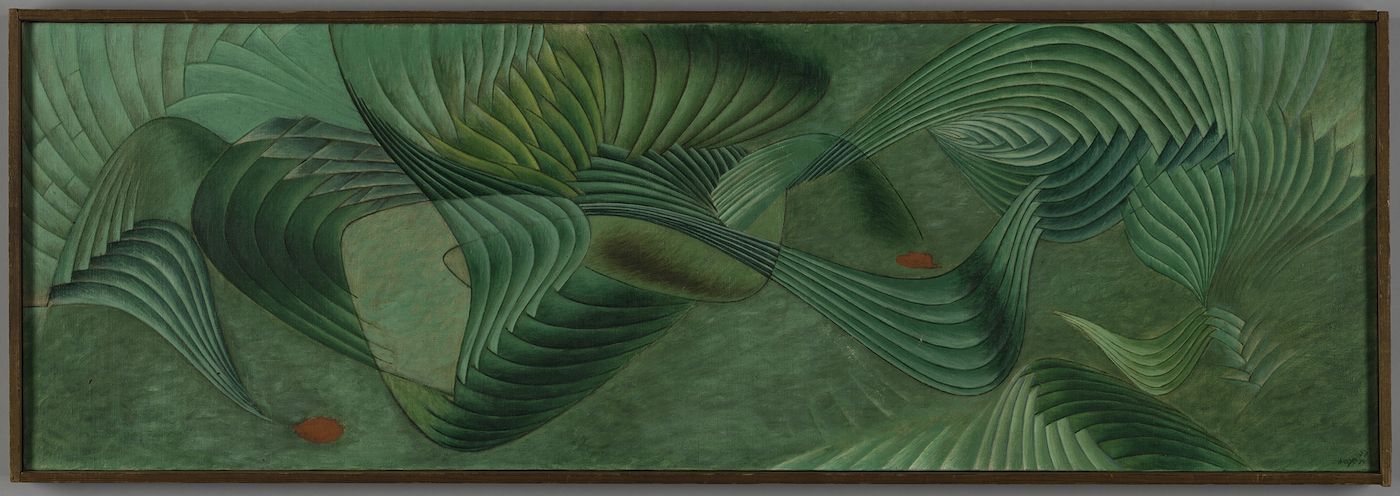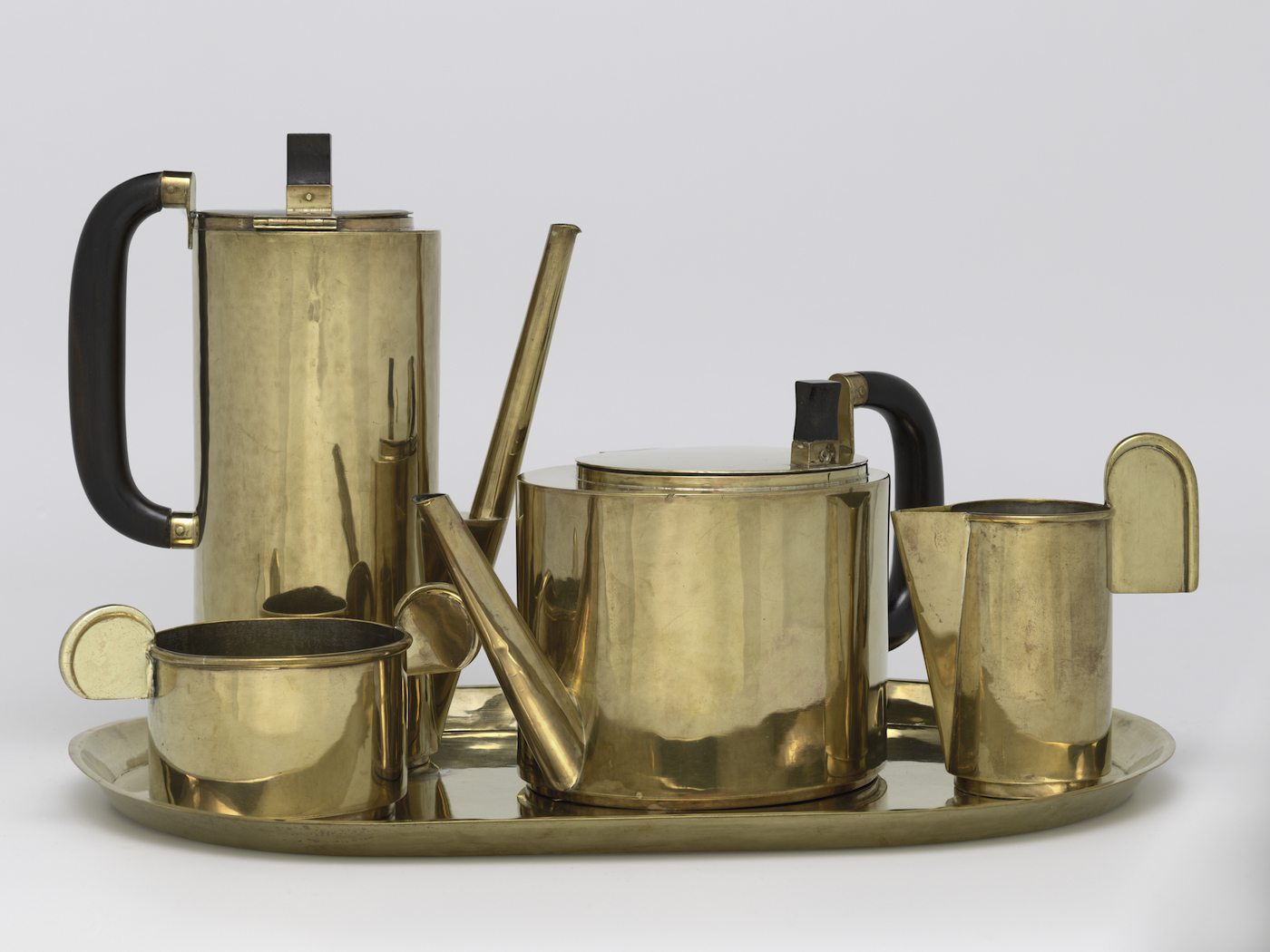
Marianne Brandt, “Untitled [with Anna May Wong]” (1929) (Harvard Art Museums/Busch-Reisinger Museum, Purchase through the generosity of the Friends of the Busch-Reisinger Museum and their Acquisitions Committee, Richard and Priscilla Hunt, Elizabeth C. Lyman, Mildred Rendl-Marcus, and Sylvia de Cuevas, 2006.25. © Artists Rights Society (ARS), New York. photo: Harvard Art Museums, © President and Fellows of Harvard College)
For those not particularly familiar with the art and design school, a good place to start is the website’s simple but thorough timeline complete with visual aids that presents a good overview of its development during the Weimer Republic, from its founding in 1919 by Walter Gropius to its dissolution in 1933; it also traces the legacy of the movement and how Harvard’s own archive amassed, concluding with 1969, the year Gropius dies. And if you’re a Bauhaus aficionado, come on in, the water’s fine! — although the pool is pretty deep.

Paul Klee, “Newly Built Pyramid with the Eye of the Moon” (1919) (Harvard Art Museums/Busch-Reisinger Museum, Bequest of Joy C. and Marion J. Levy, Jr., 2015.71. © Artists Rights Society, New York/VG Bild-Kunst, Bonn. Photo: Ali Elai – Camerarts) (click to enlarge)
“The Busch-Reisinger Museum’s Bauhaus-related holdings make up nearly three-fourths of its total collection,” Lynette Roth, the museum’s Daimler Curator said in a statement. “In light of the upcoming 100th anniversary of the school’s founding, we wanted to encourage the study of these collections and better understand the history and significance of Harvard’s own Bauhaus legacy.” Note that the holdings are described as “Bauhaus-related holdings”: many of the objects were not created at the Bauhaus, but are included as they were made by Bauhaus teachers and students both at and after their time at the school; others drew inspiration from Bauhaus pedagogy (explore these in the “Pedagogy” theme).
The collection emerges largely due to the efforts of Robert Wiesenberger, the museum’s 2014–16 Stefan Engelhorn Curatorial Fellow. Wiesenberger also penned an in-depth essay, “The Bauhaus and Harvard,” that explores the linked history of the school and the university, highlighting the impact various artists had on the campus, from Gropius — who headed the Graduate School of Design’s architecture department — in particular, to Josef and Anni Albers. The university also hosted the first US exhibition of the Bauhaus, organized in 1930 by undergraduates, which marked the only one to occur during the school’s 14-year lifespan. The website also examines the influence of Bauhaus beyond campus, featuring a Google Map that highlights institutions, archives, architectural points of interests, and other projects that were affiliated with the school in the Boston area.
As Roth said, the Bauhaus Special Collection is just one part of a larger endeavor to stir greater public engagement with Harvard’s Bauhaus collections. The museum is currently planning for a major exhibition of its holdings across the campus in 2019.

Bauhaus cake made for Walter Gropius’ 80th birthday party (1963) (Walter Gropius Papers, file 22. Harvard Art Museums Archives, Harvard University, Cambridge, MA)

Ruth Asawa, “BMC on newsprint” (1948–49) (Harvard Art Museums/Busch-Reisinger Museum, Gift of Josef Albers, BR49.390. © Ruth Asawa Lanier. Photo: Harvard Art Museums, © President and Fellows of Harvard College)

David Cooper, “Josef Albers Teaching at the Harvard Graduate School of Design” (1950) (Harvard Art Museums/Busch-Reisinger Museum, Museum Purchase, BR50.534. Photo: Harvard Art Museums, © President and Fellows of Harvard College)

Herbert Bayer, “Study for Verdure [Harvard Graduate Center Mural]” (1950) (Harvard Art Museums/Busch-Reisinger Museum, Transfer from Harvard Corporation, 1950.106. © Artists Rights Society, New York/VG Bild-Kunst, Bonn. Photo: Harvard Art Museums, © President and Fellows of Harvard College)

Anni Albers, “Design for a Rug” (1927) (Harvard Art Museums/Busch-Reisinger Museum, Gift of Anni Albers, BR48.49. © The Josef and Anni Albers Foundation/Artists Rights Society, New York. Photo: Harvard Art Museums, © President and Fellows of Harvard College)

Kurt Schmidt, “Bauhaus Exhibition Postcard No. 19” (1923) (Harvard Art Museums/Busch-Reisinger Museum, Association Fund, BR49.640. Photo: Harvard Art Museums, © President and Fellows of Harvard College)

Wilhelm Wagenfeld, “Coffee and Tea Service: 5-Piece Set” (1924–25) (Harvard Art Museums/Busch-Reisinger Museum, Gift of Hanna Lindemann, BR52.22- 26. © Artists Rights Society, New York/VG Bild-Kunst, Bonn. Photo: Harvard Art Museums, © President and Fellows of Harvard College)

László Moholy-Nagy, “Light Prop for an Electric Stage (Light-Space Modulator)” (1930) (Harvard Art Museums/Busch-Reisinger Museum, Gift of Sibyl Moholy-Nagy, BR56.5. © Artists Rights Society, New York/VG Bild-Kunst, Bonn. Photo: Harvard Art Museums, © President and Fellows of Harvard College)

Catalogue of the 1930 Bauhaus exhibition, (Harvard Society for Contemporary Art, Harvard University Archives, HUD 3298, Box 1)

No hay comentarios:
Publicar un comentario